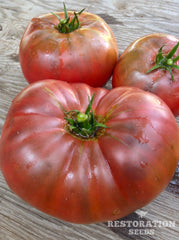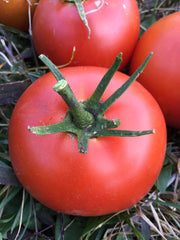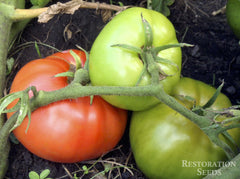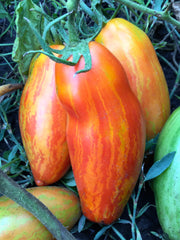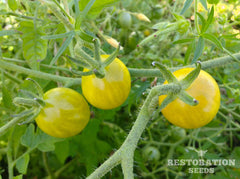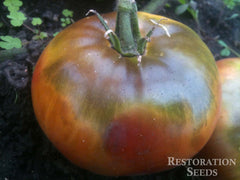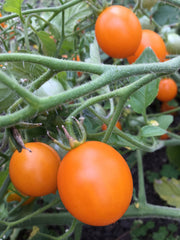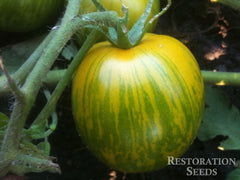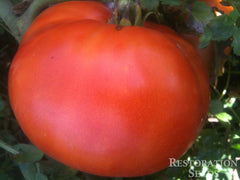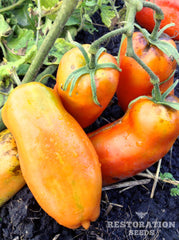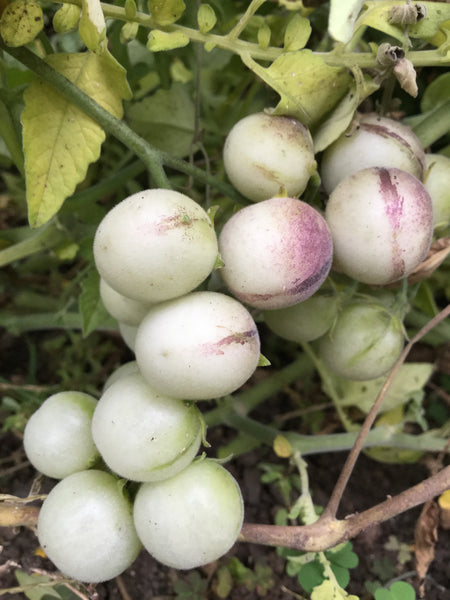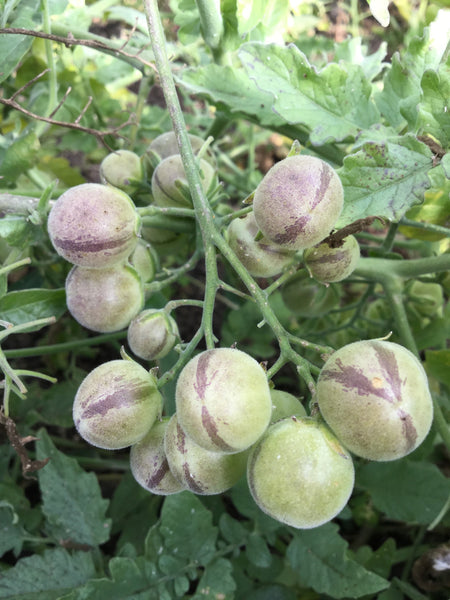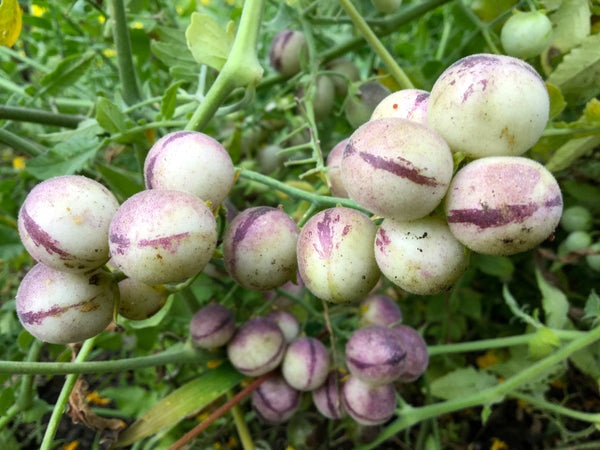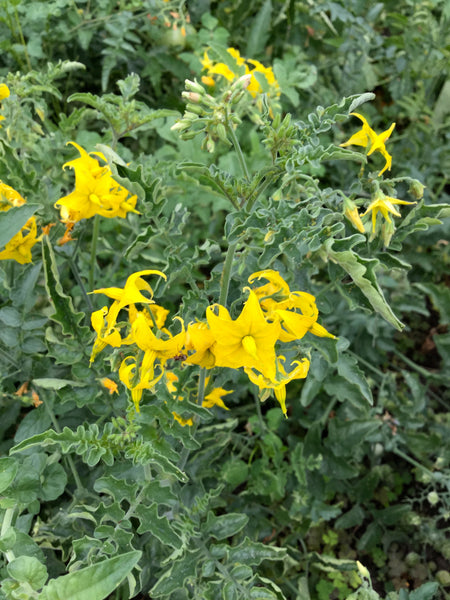Wild
Solanum peruvianumDays from maturity calculated from the date of transplant. Average 8,400 seeds per ounce. Federal germination standard for common tomato: 75%. However, this is not the common tomato, Solanum lycopersicum. Usual seed life: 4-10 years. Isolation distance for seed saving: 75-150 feet.
Planting Depth 1/4”
Soil Temp. Germ. 70-85˚F
Days to Germ. 6-10
Plant Spacing 24”
Row Spacing 3-5”
Days To Maturity 150–180
Full Sun, Moist Well Drained
- 40 Seeds$3.50
- 400 Seeds$12.50
Dr. Alan Kapuler, “Likely, S. peruvianum is a complex hybrid population with considerable variation in growth habit, leaf shape and tress characteristic leading people to assume that it is several species.” A wild tomato native of Peru and Ecuador. It makes small sulfur yellow flowers and yellowish green, slightly bitter fruits with brownish green stripes or lilac shades. Fruits are usually not eaten raw but cooked and added to stews. Easily grown in any rich, well drained soil in a sunny spot. Delicious tomato recipes.
Companions: basil, parsley, chives, onions, carrots, marigolds, nasturtium
Inhibitors: cabbage family, fennel, dill, potatoes, borage
Meet Your Farmer
We promote fair trade, organic practices and environmental responsibility throughout the Restoration Seeds supply chain. Below are the family farmers and seed suppliers who bring our open pollinated seeds to you.


